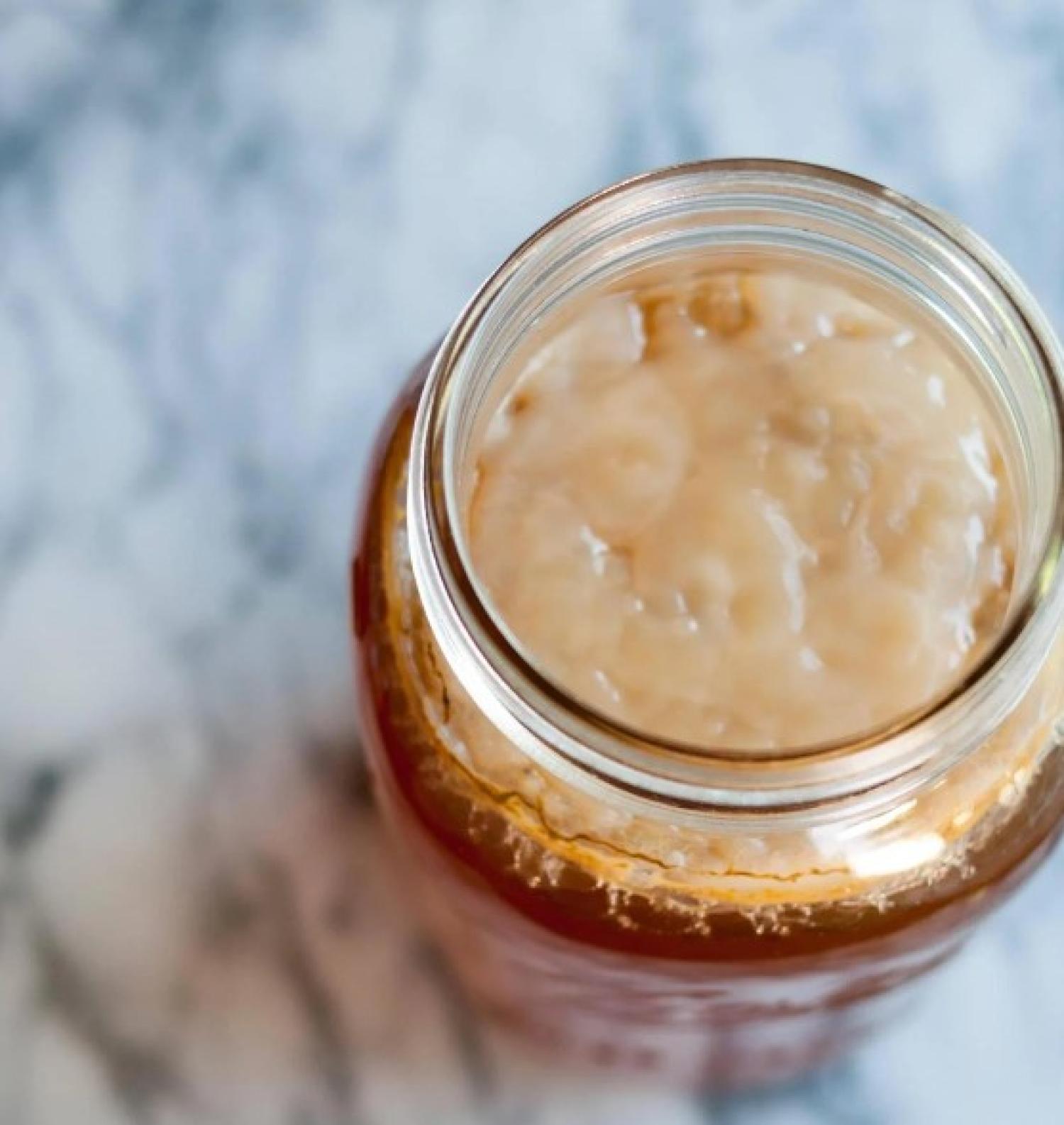Biomaterials: what is SCOBY leather?

SCOBY stands for symbiotic culture of bacteria and yeast. Unless you are experienced in biology, those words may mean little to you.
What is SCOBY?
According to Brew Dr, “when certain bacteria and yeast are put together and cultivated in the right environment, you get SCOBY. It’s a living culture that grows and evolves, consuming sugar as its fuel.”
As you may know, kombucha is created through fermentation. When making kombucha, SCOBY is added to tea, after which it breaks down the sugars found in the tea, turning the tea into the fizzy kombucha that we know and love. The bulk of the SCOBY is then removed, but some small particles remain in any kombucha bottle.
Another use for SCOBY: vegan leather
In the process of making kombucha, very little SCOBY actually goes to waste. The unused SCOBY can be saved in jars and used to make more SCOBY.
But in recent years, SCOBY has been studied for use in “medicine, textiles, and as a food additive.” It can actually be harvested, dried, molded and used to make 100% biodegradable vegan leather.
It can be grown and created much easier than traditional leather because no animal products are needed. During the growing process, the material can be manipulated to be as thin, thick or flexible as desired.
Biomaterials have been slowly gaining more popularity in the fashion industry, from microsilk (fermented yeast spun into clothing fibers) to leather made from mycelium mushrooms. SCOBY leather is another example of this. Suzanne Lee is one of the leading professionals in the field of SCOBY leather with the Biocouture research project and her company, BIOFABRICATE.
The future of SCOBY
As biomaterials become more and more popular for manufacturing, who knows what the future will hold for the fashion industry. As independent designers learn just how easy the process is, it could make more sense to incorporate SCOBY into their projects. The effects of the widespread use of a 100% biodegradable and vegan clothing material on the environment could be incredible.
Some advocates of animal leather argue that it's better for the environment to use the hides created from the meat industry in clothing than to throw them away. But, a new study found that even the methane produced by rotting cowhides has an overall lower impact than the carbon footprint produced by turning a hide into leather.
Overall, it appears as though a material like SCOBY would create less carbon emissions than the processing of raw leather, which could revolutionize the leather industry and make the planet a better place.
SCOBY recipe
Finally, if you’re curious about how to make your own SCOBY, here is a recipe!
You will need:
- 8 cups water
- 1 cup granulated sugar
- 8 teabags black tea or green tea
- 2 cups of starter kombucha
- 1 gallon jar or container
- 2 coffee filters
- A rubber band
Process:
Bring water to a boil. Add sugar and stir until dissolved.
Remove from heat, add teabags and bring to room temperature.
Pour the kombucha into your gallon container and add the room-temperature tea and sugar mixture.
Cover the jar with two coffee filters and secure with a rubber band; place indoors out of direct sunlight.
Do not disturb the container while your SCOBY is forming. It can take 1-4 weeks to form. Once you've grown a gelatinous substance about ¼ inch thick, your SCOBY is viable. You can keep the tea to make your first batch of homemade kombucha, and you can dry and use the SCOBY as a leather-like material in crafting projects!


